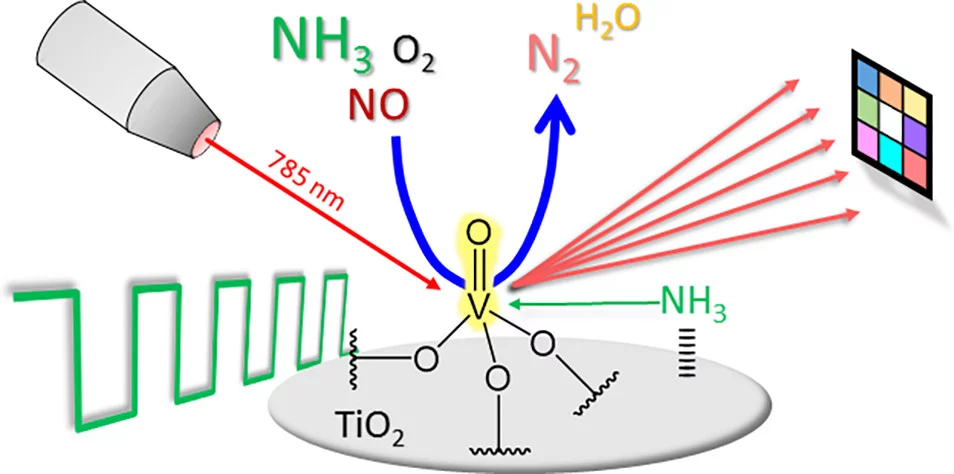Modulated excitation experimentation allows to obtain an increased level of mechanistic information from Raman spectroscopy. A V2O5/TiO2 catalyst for the selective catalytic reduction (SCR) of NOx was subjected to periodic NH3 pulses while recording time-resolved Raman spectra simultaneously. Through phase sensitive detection, we confirmed unambiguously that both VOx and TiO2 play a dynamic role in the SCR process. Only a well-defined portion of VOx species, i.e. those that are coordinatively unsaturated, act as catalytic active centers while the majority remain largely unresponsive to the NH3 pulses. Although TiO2 is not directly involved in the SCR reaction, the phase-resolved Raman spectra demonstrate that it acts as a reservoir of NH3 molecules that can be mobilized to the active sites. The inherent depth of these molecular insights goes beyond what is currently achievable with Raman experiments under steady-state conditions. Modulated excitation Raman spectroscopy can therefore advance the fundamental understanding of SCR and other metal oxide-catalyzed reactions.
Please refer to ACS Catalysis 2019, 9, 6814-6820 for further information.

